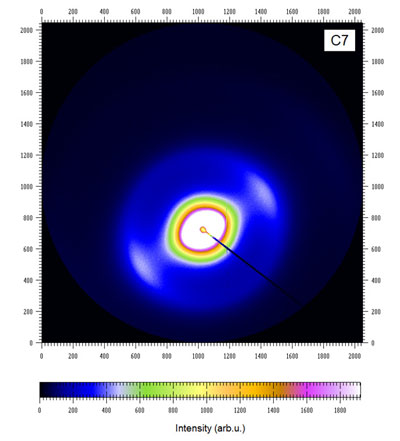 Using the new beamline, 911-4, at MAX-lab in Lund, Sweden, researchers can study a wide range of different types of material with a resolution of a few nanometres. This could be useful for both basic research and industry in general. The facility is the result of a Danish-Swedish collaboration. Now it is opening for research.
Using the new beamline, 911-4, at MAX-lab in Lund, Sweden, researchers can study a wide range of different types of material with a resolution of a few nanometres. This could be useful for both basic research and industry in general. The facility is the result of a Danish-Swedish collaboration. Now it is opening for research.
May 24th, 2011
Read more
For the twentieth year, Photonex 2011 will be run as a combined exhibition and technical conference for those working in optics, photonic and imaging technology. It is the UK's largest exhibition of these technologies and attracts an audience from all parts of the world with 15 countries represented in 2010.
May 24th, 2011
Read more
Organische Leuchtdioden werden immer mehr Anwendungen erobern und neue Moeglichkeiten in Design und Funktion eroeffnen. Wissenschaftler am Institut fuer Nanotechnologie (INT) des KIT haben nun eine Simulationsloesung zur zeit- und kostenguenstigen Optimierung von OLEDs entwickelt. Mit "SiMoNa" lassen sich Materialeigenschaften gezielt verbessern sowie geeignete Farbstoffmolekuele designen und patentieren.
May 24th, 2011
Read more
The Dutch Ministry of Social Affairs and Employment has released a new document "Guidance working safely with nanomaterials and nanoproducts, the guide for employers and employees". This document provides guidance on how to organize a safe workplace when working with nanomaterials and nanoproducts.
May 24th, 2011
Read more
A new eTwinning toolkit has been produced in the context of NANOYOU to offer schools creative ideas to explore and learn about nanotechnologies. The toolkit provides guidelines to organise a class program as well as pedagogical objectives, follow up suggestions and evaluation ideas.
May 23rd, 2011
Read more
New research demonstrates for the first time the exact molecular structure of the proteins which enable bacterial cells to transfer electrical charge.
May 23rd, 2011
Read more
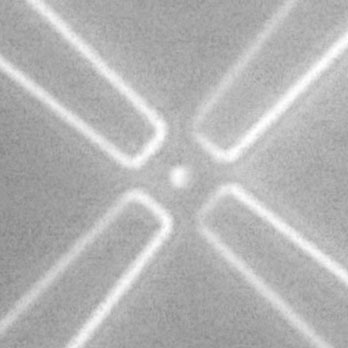 A team led by Yale University researchers has proven that isolating individual charged particles, like DNA molecules, is indeed possible using a method called "Paul trapping", which uses oscillating electric fields to confine the particles to a space only nanometers in size.
A team led by Yale University researchers has proven that isolating individual charged particles, like DNA molecules, is indeed possible using a method called "Paul trapping", which uses oscillating electric fields to confine the particles to a space only nanometers in size.
May 23rd, 2011
Read more
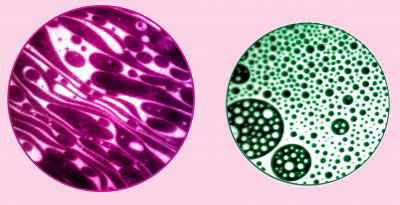 Laboratory studies by chemical engineers at UC Santa Barbara may lead to new experimental methods for early detection and diagnosis - and to possible treatments - for pathological tissues that are precursors to multiple sclerosis and similar diseases.
Laboratory studies by chemical engineers at UC Santa Barbara may lead to new experimental methods for early detection and diagnosis - and to possible treatments - for pathological tissues that are precursors to multiple sclerosis and similar diseases.
May 23rd, 2011
Read more
Electrical engineers at Duke University have determined that unique man-made materials should theoretically make it possible to improve the power transfer to small devices, such as laptops or cell phones, or ultimately to larger ones, such as cars or elevators, without wires.
May 23rd, 2011
Read more
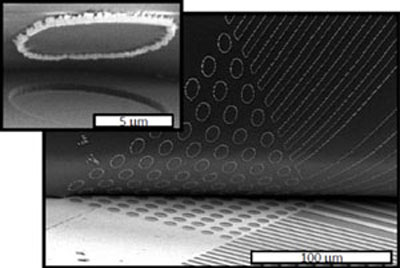 Scientists from Argonne's Center for Nanoscale Materials's Nanofabrication Group, working with users from the University of Wisconsin-Stevenson Point, discovered a fast, simple, scalable technique for solution-based, electrochemical synthesis of patterned metallic and semiconducting nanowires from a reusable, nonsacrificial, ultrananocrystalline diamond (UNCD) template.
Scientists from Argonne's Center for Nanoscale Materials's Nanofabrication Group, working with users from the University of Wisconsin-Stevenson Point, discovered a fast, simple, scalable technique for solution-based, electrochemical synthesis of patterned metallic and semiconducting nanowires from a reusable, nonsacrificial, ultrananocrystalline diamond (UNCD) template.
May 23rd, 2011
Read more
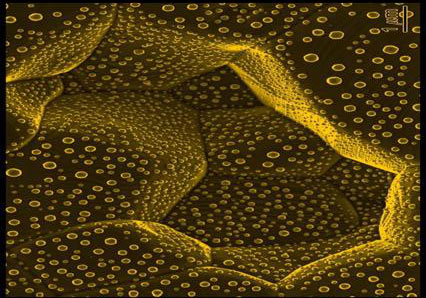 Researchers at the Technion have discovered the nature of nanometer-thick layers between different materials and found that they have both solid and liquid properties. By doing so, the researchers made a crucial addition to Gibbs' theory which describes the fundamental aspects of the thermodynamics of interfaces.
Researchers at the Technion have discovered the nature of nanometer-thick layers between different materials and found that they have both solid and liquid properties. By doing so, the researchers made a crucial addition to Gibbs' theory which describes the fundamental aspects of the thermodynamics of interfaces.
May 23rd, 2011
Read more
Das Oeko-Institut stellt mit dem Nano-NachhaltigkeitsCheck ein Instrument vor, mit dem eine einheitliche Bewertung der Nachhaltigkeitspotenziale von Nanoprodukten moeglich wird. Damit steht erstmals ein einheitliches Raster zur Verfuegung, um Umweltbe- oder -entlastungen, aber auch Risiken und Herausforderungen fuer die Markteinfuehrung von Produkten mit Nanomaterialien zu identifizieren.
May 23rd, 2011
Read more
It will perhaps be possible, in the near future, to detect cancer by a simple blood or urine test. In fact, biologists from CNRS, Inserm, Paris Descartes and Strasbourg universities have developed a technique capable of detecting minute traces of tumoral DNA present in the biological fluids of patients suffering from cancer. The method consists in carrying out ultra-sensitive molecular analyses in microscopic droplets.
May 23rd, 2011
Read more
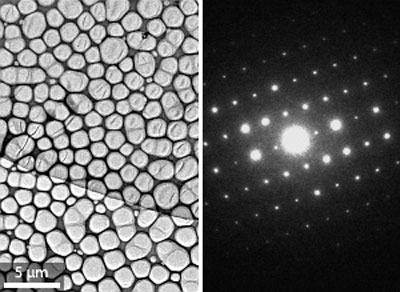 One of the most striking properties of graphene is arguably its two-dimensionality. The remarkable electronic behavior realized by this two-dimensionality has prompted researchers to try and form similar two-dimensional sheets from other materials. Wenping Hu and colleagues from the Beijing National Laboratory for Molecular Sciences in China have now succeeded in growing two-dimensional crystals of an organic semiconductor on large scales and on various types of substrate with a view to developing advanced organic electronic devices.
One of the most striking properties of graphene is arguably its two-dimensionality. The remarkable electronic behavior realized by this two-dimensionality has prompted researchers to try and form similar two-dimensional sheets from other materials. Wenping Hu and colleagues from the Beijing National Laboratory for Molecular Sciences in China have now succeeded in growing two-dimensional crystals of an organic semiconductor on large scales and on various types of substrate with a view to developing advanced organic electronic devices.
May 23rd, 2011
Read more
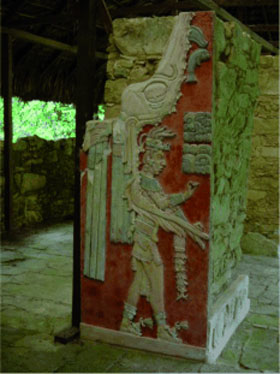 The yellow hue of a series of samples from wall paintings in several Mayan archaeological sites can be attributed to the presence of indigoid compounds, including isatin and dehydroindigo, attached to palygorskite, a local phyllosilicate clay. SEM/EDX, TEM, UV/Vis spectroscopy, and voltammetry of microparticles show that the ancient Mayas could prepare indigo, Maya Blue, and "Maya Yellow" during successive stages.
The yellow hue of a series of samples from wall paintings in several Mayan archaeological sites can be attributed to the presence of indigoid compounds, including isatin and dehydroindigo, attached to palygorskite, a local phyllosilicate clay. SEM/EDX, TEM, UV/Vis spectroscopy, and voltammetry of microparticles show that the ancient Mayas could prepare indigo, Maya Blue, and "Maya Yellow" during successive stages.
May 23rd, 2011
Read more
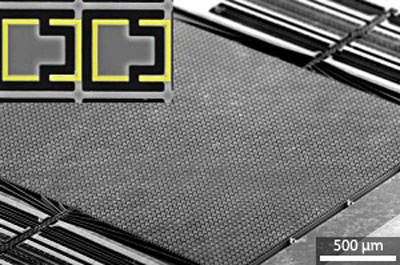 Ai-Qun Liu from Nanyang Technological University in Singapore and colleagues from Singapore, Taiwan, France and Hong Kong have prepared a metamaterial with optical properties that can be switched dynamically using micromachined actuators.
Ai-Qun Liu from Nanyang Technological University in Singapore and colleagues from Singapore, Taiwan, France and Hong Kong have prepared a metamaterial with optical properties that can be switched dynamically using micromachined actuators.
May 23rd, 2011
Read more
 Using the new beamline, 911-4, at MAX-lab in Lund, Sweden, researchers can study a wide range of different types of material with a resolution of a few nanometres. This could be useful for both basic research and industry in general. The facility is the result of a Danish-Swedish collaboration. Now it is opening for research.
Using the new beamline, 911-4, at MAX-lab in Lund, Sweden, researchers can study a wide range of different types of material with a resolution of a few nanometres. This could be useful for both basic research and industry in general. The facility is the result of a Danish-Swedish collaboration. Now it is opening for research.







 Subscribe to our Nanotechnology News feed
Subscribe to our Nanotechnology News feed